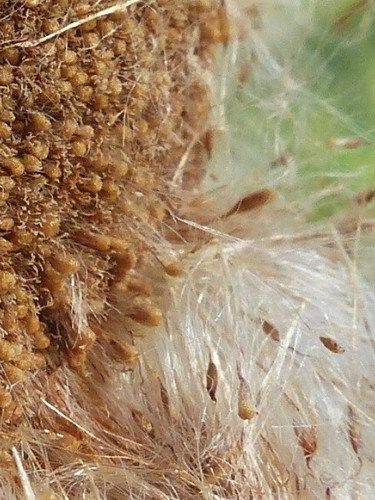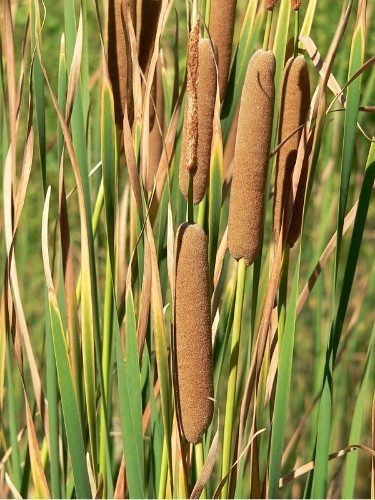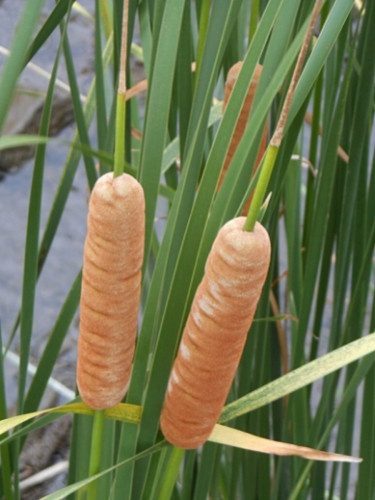
The southern cattail is an aquatic, herbaceous, rhizomatous, and perennial plant with long foliage, featuring characteristic spikes reminiscent of skewered sausages. Native to South America, it is often found in marshy and marginal areas, thriving in flooded, swampy, humid, sandy, and mangrove environments, tolerating up to 1.5 meters of inundation. Due to its high dispersal capacity, it’s sometimes considered an invasive species. It bears starchy, cylindrical rhizomes that remain submerged and anchored along watercourses. Its leaves are asymmetrical, elongated, upright, membranous, laminar, and green, reaching heights of up to 3 meters. The inflorescences are spike-like, monotypic (either female or male), appearing between summer and autumn, ranging in color from light brown to grayish-orange, adorned with one or more deciduous leafy bracts. The fruits, emerging during winter, are fusiform and monospermic achenes, brown in color, adorned with plumes, and widely dispersed by the wind.

A species with functions that extend far beyond aesthetic beauty, the southern cattail often plays a pivotal role in revitalizing wetland environments, lakes, dams, and rivers. Large clusters of this plant contribute significantly to the purification of aquatic surroundings, absorbing heavy metals and reducing bacterial contamination, while providing sustenance and shelter for a wide array of creatures, from insects to birds, amphibians, rodents, reptiles, and fish. Its sizable leaves gently sway with the wind, adding movement to landscapes. This makes it ideal for creating unique aquatic gardens and restoring degraded habitats. As awareness grows regarding the importance of wetland habitats within a sustainability context, the southern cattail becomes a valuable tool in the hands of landscapers. It can be used in conventional water features like ponds, water mirrors, and fountains, as well as in rain gardens, floodplains, and wetlands—areas once deemed insignificant and often even reclaimed.

In addition to its aesthetic and ecological significance, the southern cattail holds practical utility. Both its rhizome and shoots, as well as the spike (both during flowering and fruiting stages), are edible and nutritionally rich for both humans and animals. Moreover, it yields a substantial amount of biomass, with its durable and resistant fiber used as raw material for paper, pulp, baskets, bags, insulation, upholstery, furniture, and artisanal goods by riverside communities. As if that weren’t enough, it boasts medicinal properties.
It thrives in full sun and prefers waterlogged, humus-rich, and nutrient-dense soils. A hardy plant, it grows rapidly and isn’t demanding in terms of cultivation. The southern cattail enjoys warm and humid climates but fares well in tropical to temperate conditions. It doesn’t tolerate prolonged droughts, and inundation exceeding 1.5 meters for extended periods is also detrimental to its growth. In case of drought, frequent watering is advised to keep the soil moist. Fertilization isn’t necessary in fish-inhabited lakes. Caution should be exercised regarding the allelopathic nature of the species, inhibiting the development of other species within the same aquatic stratum. Hence, southern cattail tend to dominate lake shores or swampy areas. Propagation is possible through division of clumps, rhizomes, or seeds, at any time of the year.

